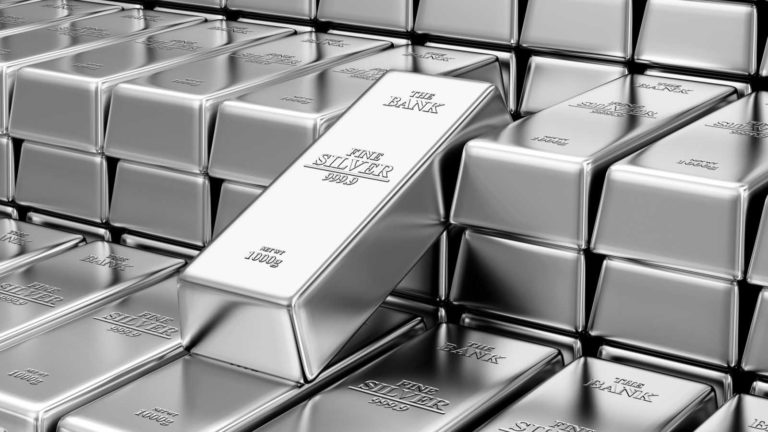Tom Yeung here with today’s Smart Money.
In 1979, three heirs to a Texas oil tycoon’s fortune decided they could corner the silver market. Collectively known as the Hunt Brothers, the trio singlehandedly inflated the price of silver.
You see, commodities like silver have highly active futures markets… and this speculative paper trade creates opportunities for daring investors to pull out the rug.
After all, owners of futures contracts can demand physical delivery if they choose. And when 98% of silver futures contracts are settled by rolling them over into a new contract, it’s easy to forget this fact.
The Hunt Brothers made them remember.
By the end of 1979, the brothers had quietly bought up 100 million ounces of physical silver and another 150 million ounces through futures contracts. Together, they controlled as much as one-third of all silver not owned by governments.
Their massive holdings soon sparked a panic among futures brokers. Traders realized there was not enough physical silver to satisfy the Hunt Brothers’ 150 million ounces of futures contracts, so the oil heirs could simply demand silver that no one had.
This massive supply-demand imbalance meant prices began to rise.
$8…
$15…
$30…
By January 18, 1980, silver prices had surged 713% year-over-year to $49.45 per troy ounce. The Hunt Brothers earned billions in paper profits from the scheme before the COMEX exchange, the main futures and options market for metals, stepped in to unwind the squeeze.
A similar panic happened this month in silver markets, sending prices to heights not seen since the 1979 squeeze.
So, in today’s Smart Money, I’ll detail why silver is now reaching a new 45-year high… what it means for silver stocks… and where to find the best silver-lined plays.
The Silver Squeeze, Part 2
In early October, silver benchmark prices in London began rising. Demand from India coincided with a dwindling supply of physically available bars, and the behaviors of a new squeeze began.
Some traders started booking slots on transatlantic flights to fly silver bars from the U.S. to the U.K. Others began halting new inflows into silver ETFs.
“I have seen nothing like it ever. What we are seeing in silver is entirely unprecedented,” said Anant Jatia, chief investment officer at Greenland Investment Management, a commodities hedge fund. “There is no liquidity available currently.”
We believe this is only the start.
You see, in August, Eric pointed out here at Smart Money that gold is a “Buy,” and silver is a better “Buy.” A special indicator called the silver-to-gold-ratio (SGR) had fallen below its magic number of 1.27%, which has historically signaled incredible gains to come.
As Eric said at the time…
For most of the last 30 years, the SGR has ranged between lows around 1.2 and highs around 3.1 – meaning that the price of silver has ranged from 1.2% of the gold price to 3.1%.
The rare moments when this ratio traded below 1.27% signaled great moments to buy silver.
- A reading that low has occurred only eight times during the last 30 years. In absolute numbers, here’s what the silver price did in each case. After the ratio hit…1.25% in 1996, silver advanced 60% over the next 15 months.
- 1.24% in 2003, silver tripled over the next three years.
- 1.26% in 2008, silver skyrocketed 370% over the next three years.
- 1.20% in 2016, silver bounced 38% over the next five months.
- 1.10% in 2019, silver nearly doubled in little more than a year.
- 0.9% 2020, an all-time low, silver doubled in less than six months.
- 1.05% in 2022, silver soared 79% in less than two years.
Now, even though silver has risen sharply since August, gold has also gone up. That means the SGR ratio still sits at 1.25%, keeping it below the target “Buy” range of under 1.27%.

In addition, even if the SGR rises past 1.27%, that shouldn’t worry you too much. The rally in 2020 saw the ratio climb to 1.5%, while the 2008 one hit a stunning 3.1%.
So, what does all of this mean for silver today?
What’s Next for Silver?
Well, we fully expect the silver squeeze in London to work itself out.
High prices tend to bring physical metal out of the woodwork, and commodity exchanges have adopted rules to combat short squeezes like the one orchestrated by the Hunt Brothers in 1979.
But the underlying fundamentals of silver remain even better than they were in 1979. Silver mining is entering its fifth year of deficits (where demand exceeds supply), and demand from everything from electronics manufacturers to solar panel makers has eclipsed the volumes the photography industry once consumed.
Silver has also become a “poor man’s gold” way of hedging macro bets, as unprecedented demand from India shows. Indian manufacturers are struggling to produce silverware, and consumers are finding it hard to buy silver coins and other festive gifts ahead of Diwali.
What’s more, the demand for silver will continue to grow alongside that of artificial intelligence…
The Silver Lining of the AI Revolution
AI has been top of mind here at Smart Money for a while now. After all, AI will someday become smart enough to create better versions of itself. Then, there’s no limit to how powerful the technology can become.
But leading up to that moment, we’re going to need more computing power.
A lot more.
In fact, a study by the International Energy Agency finds that power demand from AI data centers will double by 2030, to 945 terawatt-hours (TWh), more than the country of Japan uses today. That means we’re going to need more AI chips… data centers… and electricity.
This last part is where silver comes in.
That’s because this precious metal has the highest electrical conductivity of any metal… even more than copper. It also maintains this conductivity at microscopic scales in a way copper cannot.
That makes silver an essential component of the advanced electronics and solar cells used in AI technologies. We could see silver demand rise another 35% over the next five years from solar alone.
In addition, supply will remain tight because most silver is a byproduct of mining other metals, such as lead, zinc, and copper. Most miners simply don’t wake up one day and decide to mine more silver.
And we all saw what happened the last time silver traders chased metal they didn’t have!
Bottom line: The demand for silver and its current short squeeze are benefiting silver stocks and ETFs.
In fact, Eric’s silver recommendation in his Fry’s Investment Report portfolio jumped 30% since he added it just four months ago. This ETF holds substantial assets in physical silver and gold, and it has benefited from both silver’s short squeeze and a pivot into safe-haven assets.
Until next week,
Thomas Yeung
Market Analyst, InvestorPlace

